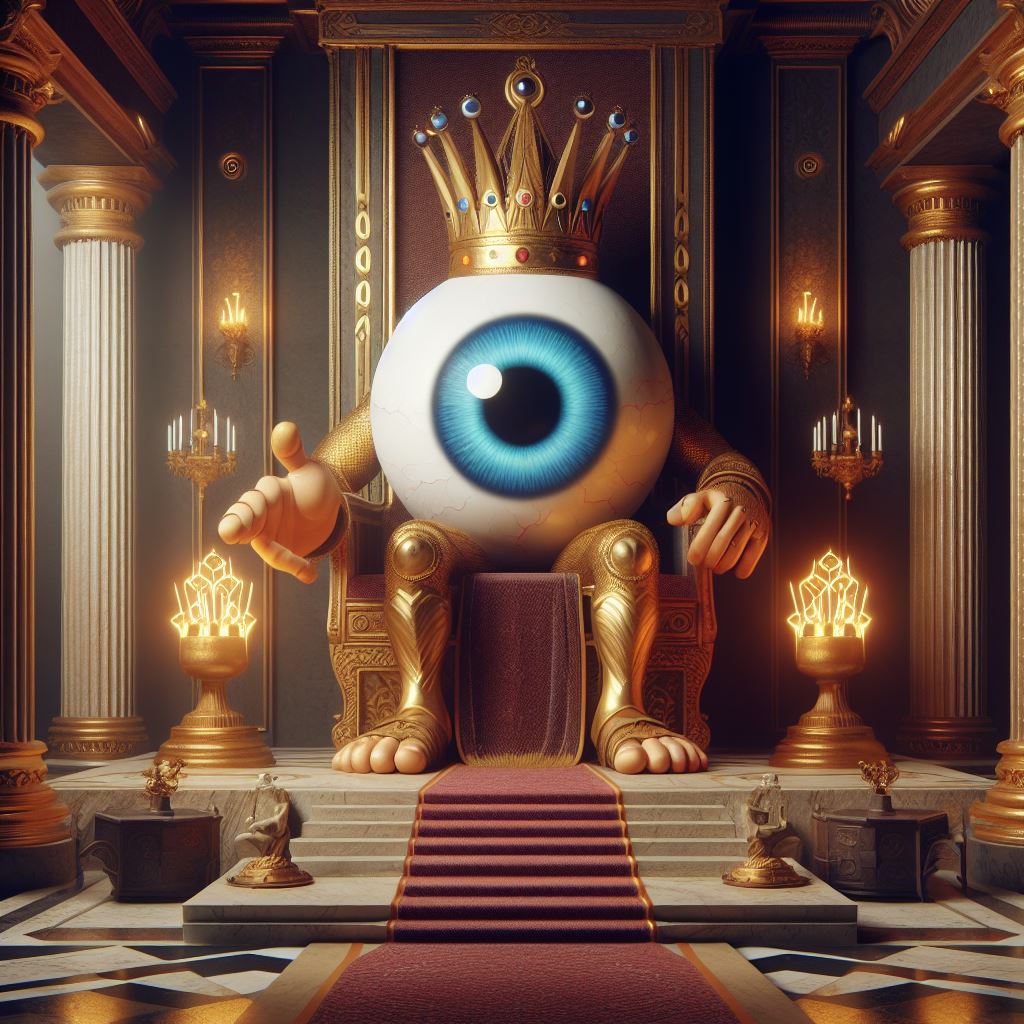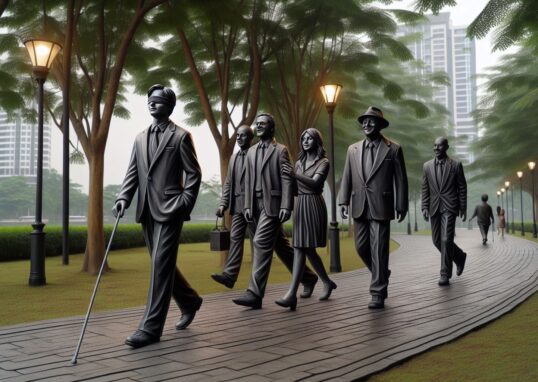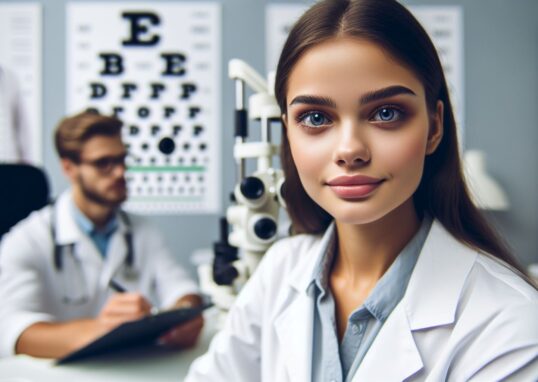
I. Introduction
Setting the Stage: Vision is an integral part of human experience, deeply embedded in our daily lives. It is through our eyes that we perceive the complexities of the world around us. The ability to see influences how we navigate our environment, learn new information, and communicate with others. The intricate process of vision involves not just the biological function of the eyes but also the sophisticated interpretation by the brain, making it a remarkable sense that plays a crucial role in our survival and interaction with the world SightSage.
Thesis Statement: Human vision is arguably the most crucial of the senses, shaping our perception and understanding of the world, driving human advancement and innovation. It is through vision that we receive approximately 50% of the information about our environment, making it a dominant force in how we process our surroundings and make critical decisions CRGSoft.
II. The Evolution of Vision
From Primitive Eyes to Complex Organs
The journey of vision begins over 600 million years ago with simple light-sensitive cells that evolved into the complex organs we have today. These primitive eyes were merely photosensitive cells that could detect light from dark, providing a survival advantage in the primordial world. Over time, these cells developed into more sophisticated structures, giving rise to the diverse range of eyes seen in the animal kingdom. The human eye, a product of this long evolutionary process, is capable of not only perceiving light and dark but also intricate shapes, colors, and depths Scientific American.
Adaptation and Survival
As humans evolved, so did their reliance on vision for survival. Early humans used their developing eyesight to navigate complex environments, identify threats, and locate resources. This reliance on sight led to the development of binocular vision, providing depth perception crucial for tasks such as hunting and gathering. The ability to perceive the world in three dimensions allowed our ancestors to better understand their surroundings and react more effectively to potential dangers National Geographic Society.
Visual Acuity
Visual acuity, or the sharpness of vision, is a testament to the precision of the human eye. It is measured by one’s ability to discern fine details at a distance, typically standardized as 20/20 vision. This clarity of sight is a result of the intricate interplay between the optical components of the eye and the brain’s ability to process visual information. The evolution of the eye has optimized these components to work together seamlessly, providing humans with a level of detail and clarity unmatched by any other sense Vision Center.
III. Vision and Human Progress
Art and Communication
Vision has been a cornerstone in the development of art and communication. The earliest forms of visual storytelling can be traced back to cave paintings, such as those found in Sulawesi, Indonesia, which are believed to be at least 35,400 years old, making them the oldest known figurative art in the world Smithsonian Magazine. Similarly, hieroglyphics in ancient Egypt were more than mere symbols; they were a complex language system that combined logographic, syllabic, and alphabetic elements, playing a crucial role in recording history and culture History of Visual Communication.
Scientific Discovery
The power of vision has led to numerous scientific breakthroughs. In astronomy, telescopes have allowed us to gaze far beyond our solar system, contributing to our understanding of the cosmos Springer Link. The invention of the microscope opened up new worlds in the realm of the tiny, fundamentally changing our knowledge of biology and medicine Phys.org. Moreover, advancements in anatomy have been propelled by imaging techniques, enhancing our comprehension of the human body Springer Link.
Technological Advancements
Technological inventions like the microscope, telescope, and camera have revolutionized our understanding of both the micro and macro universes. The microscope, for instance, has evolved from simple magnifying lenses to complex systems capable of revealing the structure of cells Science Learning Hub. The telescope, on the other hand, has transformed our view of the universe and our place within it World History Encyclopedia. Lastly, the camera has documented our existence and experiences, capturing moments in time for posterity Wikipedia.
IV. Vision in World History
Ancient Civilizations
The influence of vision on ancient civilizations is profound, particularly in Egypt, Greece, and Rome. In Egypt, the art and architecture were deeply intertwined with their religious beliefs, with symbols like the Ankh and the Eye of Horus representing life, protection, and healing. These symbols were omnipresent in their monumental structures, reflecting a civilization that revered vision as a connection to the divine Britannica. Greek and Roman architecture, adapted from Egyptian prototypes, showcased the grandeur of their civilizations through classical columns and grand building schemes, which continue to influence modern architecture World History Encyclopedia.
Renaissance and Perspective
The Renaissance marked a pivotal moment in the use of perspective in art. Artists like Filippo Brunelleschi and Leon Battista Alberti developed mathematical principles that allowed for realistic depictions of space and objects. This new approach to perspective revolutionized art, giving rise to a more immersive and naturalistic portrayal of landscapes, architecture, and human figures The Art History Archive.
Industrial Revolution
During the Industrial Revolution, vision played a critical role in the development of factories, urban planning, and transportation. The design and layout of factories were optimized for efficiency, which required careful planning and visual foresight. Urban planning during this era focused on accommodating the influx of workers into cities, leading to the development of organized streets and public transportation systems Rockwell Automation.
V. Vision vs. Other Senses
Comparing Animal Vision
Human vision is distinct from that of many animals. For instance, cats have a high concentration of rod receptors, which allows them to see well in low light, but they cannot perceive colors as vividly as humans. Dogs have dichromatic vision and are less sensitive to variations in brightness and shades of grey. Eagles, however, have incredibly sharp vision, with a deep fovea that acts like a telephoto lens Eyesite.
Color Perception
Humans possess trichromatic vision, meaning we have three types of cones in our retinas that allow us to see red, green, and blue. These cones enable us to perceive a wide range of colors. Each type of cone is sensitive to different wavelengths of visible light, contributing to our rich color vision American Academy of Ophthalmology.
Depth Perception
Binocular vision is crucial for depth perception, allowing us to judge distances and perform tasks such as driving and sports. Our eyes see slightly different views, and our brain combines these to perceive the world in three dimensions American Academy of Ophthalmology.
Night Vision
Humans and nocturnal animals have different trade-offs in night vision. Nocturnal animals have more rod cells, enhancing their vision in low light conditions. Humans, on the other hand, have better color perception and can see finer details in brighter light We Are The Mighty.
VI. Protecting Our Precious Sense
Regular Eye Exams
Regular eye exams are vital for maintaining optimal vision health. These exams can help detect eye diseases early, often before any symptoms are noticed, and when treatment is most effective. A comprehensive dilated eye exam can assess visual acuity, depth perception, eye alignment, and eye movement. Eye doctors can also spot other health conditions such as high blood pressure or diabetes during these exams. The CDC emphasizes the life-changing impact of regular eye care in preventing vision loss CDC.
Digital Age Challenges
The digital age has brought about new challenges for our eyes. Screens and blue light can affect our sleep, health, and potentially cause damage to the retina over time. Symptoms of digital eye strain include dry eyes, blurred vision, and headaches. It’s important to take breaks from screens, use blue light filters, and ensure proper lighting to mitigate these effects UC Davis Health.
Caring for Our Portal
Our eyes are gateways to the world, offering us the ability to see and experience life’s beauty. They are more than just sensory organs; they are instruments of learning, connection, and enjoyment. It’s essential to appreciate and care for our eyes, recognizing their role not only in vision but in our overall well-being Frontiers in Psychology.
VII. Conclusion
Vision is not merely a biological process but a window to the world that shapes our experiences, memories, and progress. Studies have shown that the brain processes visual information through a progression of many regions of the cortex, turning simple sensory inputs into meaningful categories that inform our actions and decisions MIT News. This complex interplay between perception and memory underscores the significance of vision in our cognitive functions and daily lives.
We must cherish our vision, recognizing its role in our quest for knowledge and understanding. Knowledge is a transformative power that allows us to see things in new ways, come up with innovative ideas, and effect change. It is through our eyes that we first learn to understand the world and ourselves, making it imperative to seek knowledge and wisdom through our vision Bookish Wisdom. Let us remember that our eyes are gateways to understanding, creativity, and the remarkable journey of humanity.





